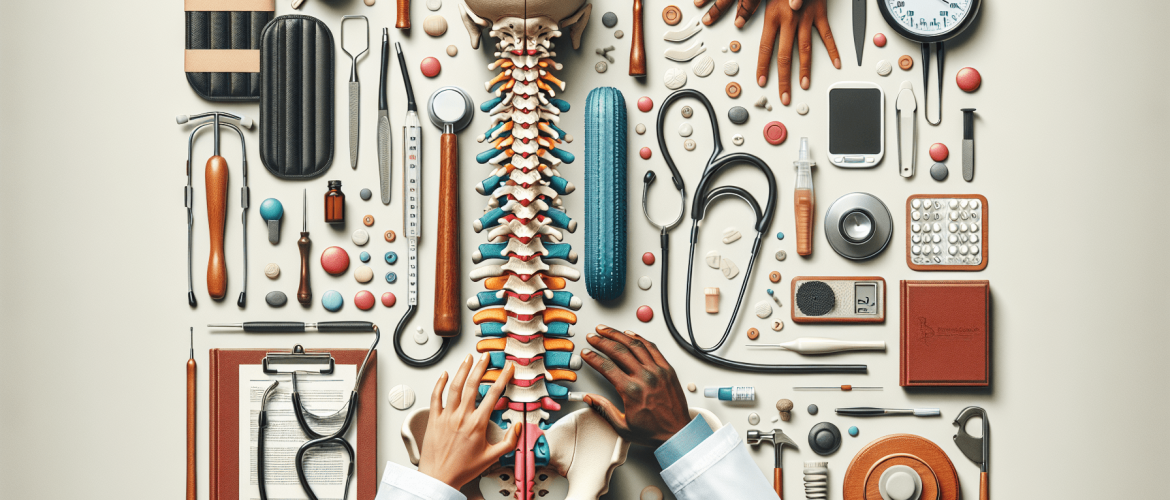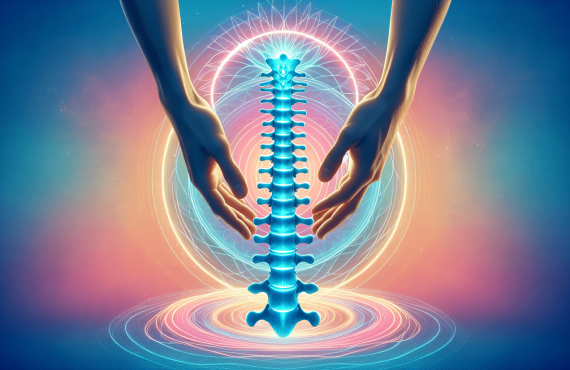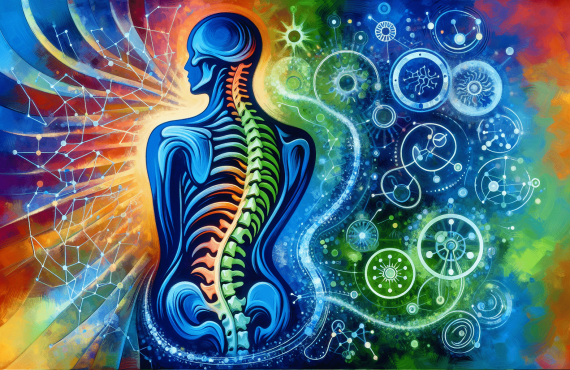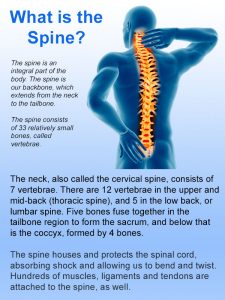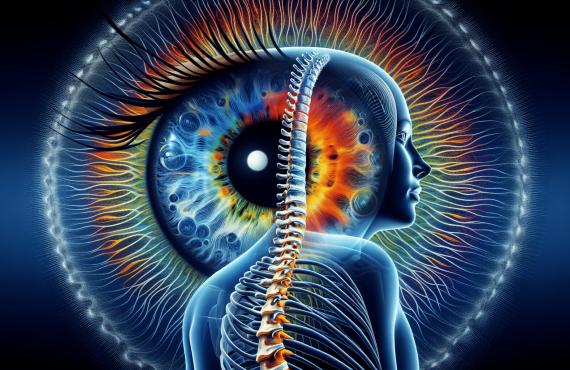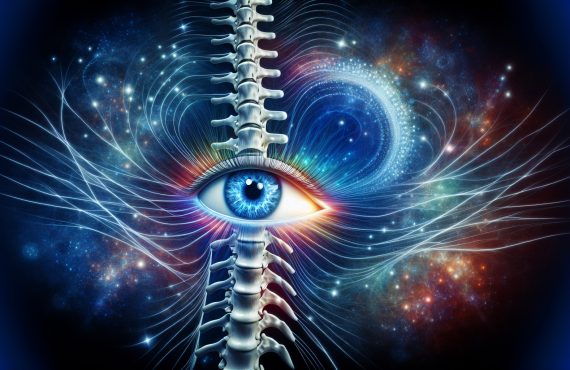If you’re looking for a way to improve your health and overall wellness, look no further than Henry Chiropractic in Pensacola, Florida. Owned and operated by Dr. Craig Henry, this chiropractic practice is dedicated to using chiropractic care to enhance every aspect of your life. Whether you’re dealing with back or neck pain or simply want to start each day feeling better, Dr. Henry and his team are here to help. With another experienced chiropractor, Dr. Aaron Hixon, also on board, you can trust that you’re in good hands. Discover how chiropractic care can complement traditional medicine and help you achieve optimal health.

Table of Contents
Chiropractic Care: An Overview
Chiropractic care is a type of healthcare that focuses on the diagnosis and treatment of mechanical disorders of the musculoskeletal system, particularly the spine. It is a non-invasive and drug-free approach that aims to restore proper alignment and function to the body, allowing it to heal naturally.
The goals of chiropractic care are to alleviate pain, improve mobility, and promote overall health and wellness. By adjusting the spine and other joints, chiropractors aim to correct any misalignments, known as subluxations, that may be interfering with the body’s ability to function optimally.
Traditional Medicine: An Overview
Traditional medicine refers to the conventional medical treatments and practices that are widely accepted and practiced by healthcare professionals. It is based on scientific evidence, clinical experience, and proven methods of diagnosis and treatment.
Mainstream medical treatments, such as medication, surgery, and physical therapy, are commonly used in traditional medicine to address various health conditions and injuries. These treatments are typically prescribed and administered by medical doctors, specialists, and other healthcare professionals.
The Role of Chiropractic Care in Healthcare
Chiropractic care is often viewed as a complementary therapy, working in conjunction with traditional medicine to provide comprehensive care to patients. By combining chiropractic care with mainstream medical treatments, patients can experience enhanced outcomes and improved overall well-being.
One of the key benefits of integrating chiropractic care with traditional medicine is the holistic approach to healthcare. Chiropractors take into account the entire body and its interconnected systems when diagnosing and treating patients. This comprehensive approach can help identify underlying issues that may be contributing to a patient’s symptoms, leading to more effective treatment and long-term relief.
Additionally, chiropractic care can provide non-invasive and drug-free alternatives to traditional medical treatments. This can be particularly beneficial for patients who prefer to avoid medications or invasive procedures. Chiropractic techniques, such as spinal manipulation, manual therapy, and soft tissue therapies, can effectively address a wide range of conditions, including musculoskeletal disorders and sports injuries.
Conditions Treated by Chiropractic Care
Chiropractic care can effectively treat a variety of conditions and symptoms, including:
Back pain
Back pain is one of the most common reasons people seek chiropractic care. It can be caused by a variety of factors, such as poor posture, muscle strain, or underlying spinal conditions. Chiropractic adjustments and therapies can help relieve back pain and improve spinal alignment.
Neck pain
Neck pain is often caused by poor posture, muscle tension, or spinal misalignments. Chiropractic care can help alleviate neck pain by adjusting the cervical spine and providing targeted therapies to reduce muscle tension.
Headaches and migraines
Headaches and migraines can be caused by a variety of factors, including tension in the neck and shoulders. Chiropractic care can help relieve tension and reduce the frequency and intensity of headaches and migraines.
Musculoskeletal disorders
Chiropractic care can effectively treat a range of musculoskeletal disorders, such as arthritis, fibromyalgia, and scoliosis. By improving spinal alignment and reducing inflammation, chiropractic techniques can help manage pain and improve mobility.
Sports injuries
Chiropractic care is commonly used for the treatment and prevention of sports injuries. It can help athletes recover from injuries, improve performance, and prevent future injuries by addressing biomechanical issues and promoting optimal musculoskeletal function.
Pregnancy-related discomfort
Chiropractic care can provide safe and effective relief for common discomforts experienced during pregnancy, such as low back pain, sciatica, and pubic symphysis dysfunction. By adjusting the spine and pelvis, chiropractors can alleviate pain and improve pregnancy-related discomfort.

Chiropractic Techniques and Methods
Chiropractic care utilizes a range of techniques and methods to diagnose and treat patients. Some of the most common techniques used by chiropractors include:
Spinal manipulation
Spinal manipulation, also known as chiropractic adjustment, involves applying controlled force to specific areas of the spine to improve spinal alignment and restore mobility. This technique can help relieve pain and improve overall spinal function.
Manual therapy
Manual therapy techniques, such as joint mobilization and soft tissue mobilization, are used to address musculoskeletal imbalances and promote healing. These techniques involve hands-on manipulation of the joints and surrounding tissues to improve mobility and reduce pain.
Soft tissue therapies
Soft tissue therapies, such as massage therapy and myofascial release, focus on releasing tension in the muscles and other soft tissues. These therapies can help reduce muscle pain and improve flexibility and range of motion.
Exercise counseling
Chiropractors often provide exercise counseling and rehabilitation programs to help patients strengthen weak muscles, improve posture, and prevent future injuries. These exercises can be tailored to individual needs and goals, promoting optimal musculoskeletal health.
The Science Behind Chiropractic Care
The effectiveness of chiropractic care is supported by scientific research studies. Chiropractic adjustments have been shown to have positive effects on the nervous system, including the reduction of pain signals and the improvement of overall body function.
Neurological mechanisms play a crucial role in chiropractic care. Spinal adjustments have been found to stimulate the release of endorphins, the body’s natural painkillers, which can help alleviate pain and promote a sense of well-being. Additionally, chiropractic adjustments can improve joint proprioception, or the body’s awareness of its position in space, leading to improved coordination and balance.
Numerous research studies have demonstrated the effectiveness of chiropractic care for various conditions, such as low back pain, neck pain, and headaches. These studies have shown that chiropractic care can provide comparable or better outcomes than traditional medical treatments, while also reducing the reliance on medications and invasive procedures.
Collaborative Approach: Case Studies
Case studies provide real-world examples of how chiropractic care can be integrated with traditional medicine to achieve optimal outcomes for patients.
Case study 1: Chiropractic care in conjunction with medication for chronic pain management
In this case study, a patient with chronic low back pain sought chiropractic care in addition to taking prescribed pain medications. The chiropractor performed spinal adjustments, soft tissue therapies, and provided exercise counseling to help alleviate the patient’s pain and improve their quality of life. By combining chiropractic care with medication, the patient experienced significant pain relief and improved mobility.
Case study 2: Chiropractic care combined with physical therapy for post-injury rehabilitation
In this case study, a patient recovering from a sports-related injury underwent both chiropractic care and physical therapy. The chiropractor performed spinal adjustments and soft tissue therapies to support the healing process, while the physical therapist provided targeted exercises and rehabilitation techniques. By working collaboratively, the chiropractor and physical therapist helped the patient regain strength, mobility, and functional abilities.
Integration of Chiropractic Care in Traditional Healthcare Settings
Chiropractic care is becoming increasingly integrated into traditional healthcare settings, such as hospitals and clinics. This integration is driven by the recognition of the value and benefits that chiropractic care can provide to patients.
Partnerships between chiropractors and medical doctors are being developed to ensure seamless collaboration and coordination of care. This allows patients to receive the best of both worlds – traditional medical treatments and chiropractic care – in an integrated and coordinated manner.
Some hospitals and clinics are incorporating chiropractic care into their services to provide patients with a more comprehensive and holistic approach to healthcare. This integration allows patients to access chiropractic care within the same healthcare facility, making it more convenient and accessible.
Training and Qualifications of Chiropractors
Chiropractors undergo extensive education and training to become licensed healthcare professionals. The requirements for education, licensing, and certification vary by country and jurisdiction.
Education requirements typically include a minimum of four years of undergraduate study followed by a Doctor of Chiropractic (D.C.) degree from an accredited chiropractic college or university. The curriculum includes coursework in anatomy, physiology, biochemistry, pathology, chiropractic principles, and clinical training.
After completing their education, chiropractors must pass national board exams and obtain a license to practice. Licensing requirements also vary by jurisdiction and may include additional exams or certifications.
To maintain their license, chiropractors are required to participate in continuing education programs and stay up to date with the latest research and advancements in the field. This ensures that chiropractors are providing safe and effective care to their patients.
Conclusion: The Future of Integrative Medicine
Chiropractic care is gaining growing acceptance and recognition as an effective and valuable form of healthcare. The integration of chiropractic care with traditional medicine offers a promising future for integrative medicine, where patients can benefit from a comprehensive and holistic approach to healthcare.
As more research studies support the effectiveness of chiropractic care, and as collaborations between chiropractors and traditional healthcare providers continue to evolve, the potential for enhanced patient outcomes and improved overall well-being becomes more evident.
By embracing a collaborative approach and integrating chiropractic care into traditional healthcare settings, we can provide patients with a range of treatment options that address their specific needs and promote optimal health and wellness.
The future of integrative medicine lies in the continued growth and development of chiropractic care as an essential component of comprehensive healthcare delivery.


